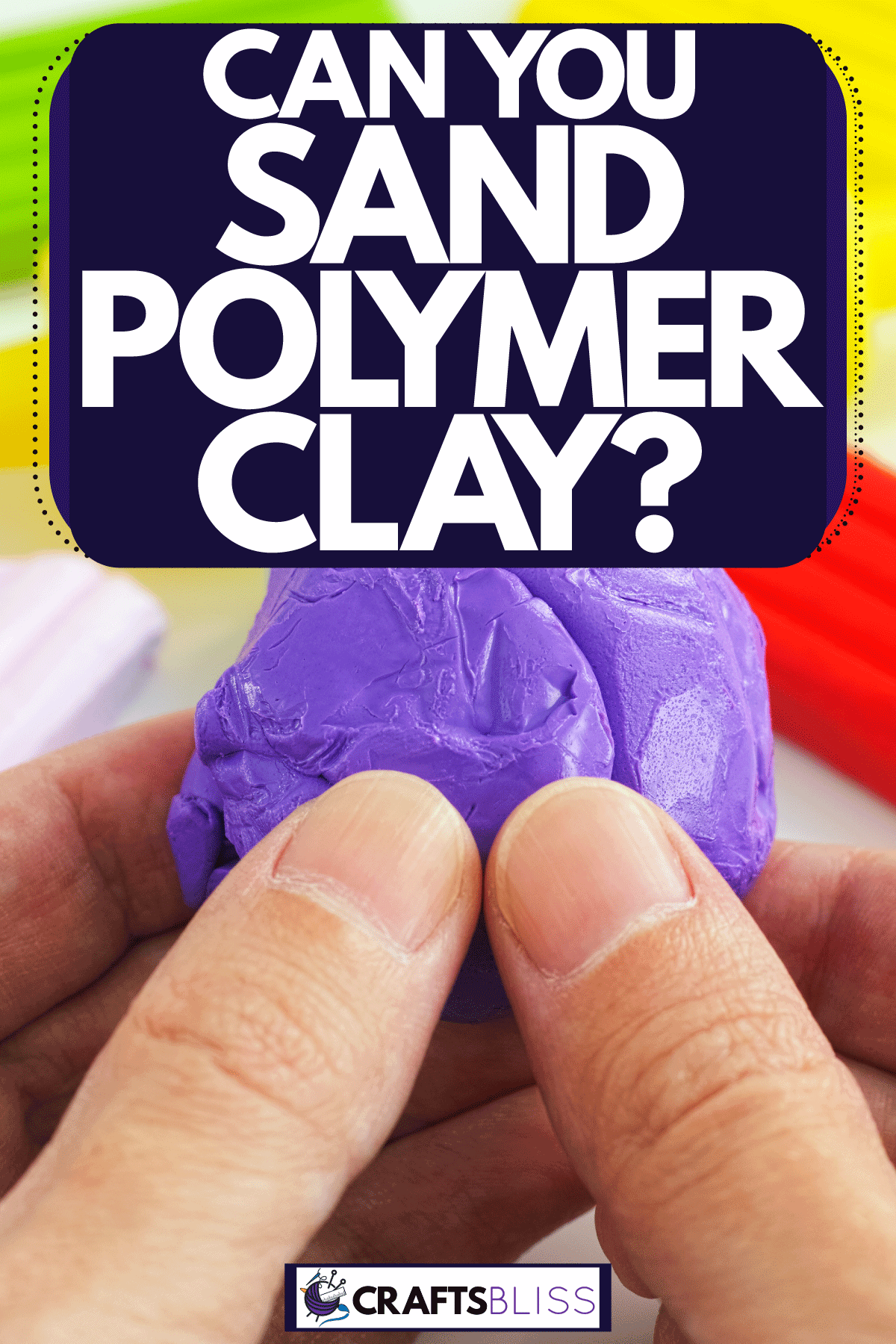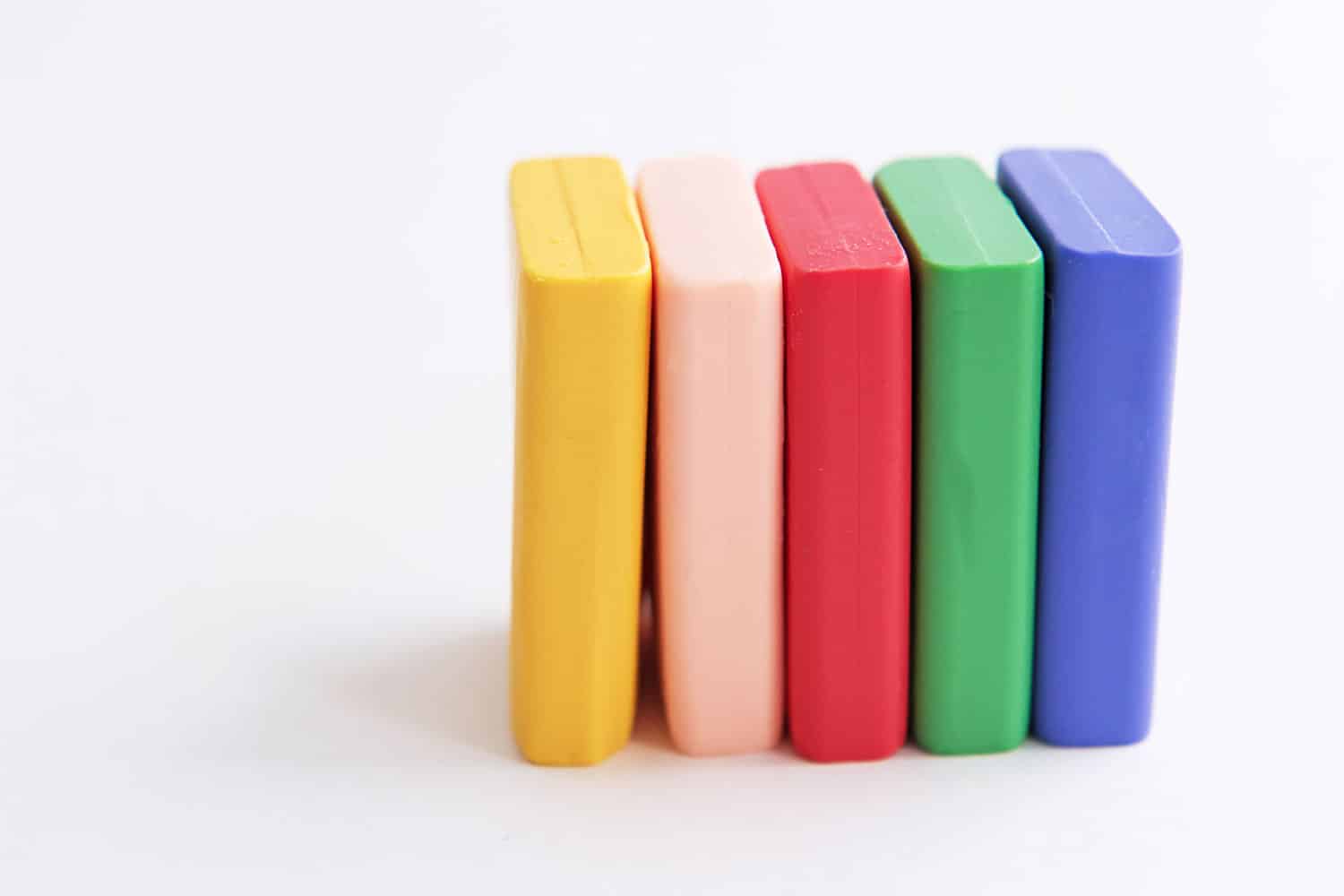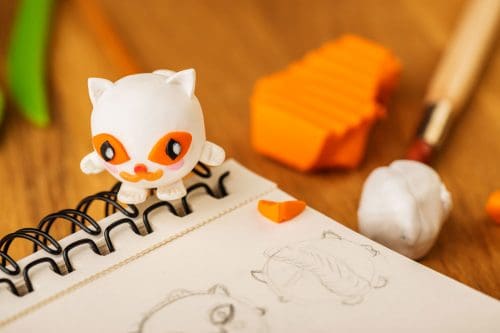Arts and crafts can be fun at any age, and clay is a popular staple. Whether you or your kids have made something out of clay, it might be a precious new keepsake. So, if you’re looking to sand down the finished product, you don’t want to ruin all the work. Polymer clay isn’t like the traditional material. In fact, it isn’t even a natural modeling material! But we’ve carefully researched if you can sand polymer clay or if you even should.
Sanding polymer clay is sometimes unnecessary, but it is still acceptable and quite common. Sanding down your polymer clay will cause some discoloration; done incorrectly can also seriously damage your work. So, it would be best if you used wet/dry sandpaper on polymer clay. Throughout the process, you’ll need to use increasing sandpaper grit gradually. However, there are also some alternatives to sandpaper altogether, such as Micro Mesh pads, a Dremel, or sanding sponges, to name a few.
Polymer clay isn’t usually made from actual clay. Polymer clay is made from a special PVC base, which only acts like clay. And sandpaper is a rough material that can damage pretty much anything. So, keep reading to learn how to properly sand polymer clay and other crafting materials.

What is the best way to sand polymer clay?
Polymer clay is just as easy to damage as traditional clay, even though they’re made of different materials. So, there are just a couple of steps you need to follow in order to safely sand down your polymer clay.
What sandpaper is best for polymer clay?
Click here to find this black and gray Wet/Dry Sandpaper on Amazon.
First, be sure to purchase the right kind of sandpaper. For polymer clay, you will want to use wet/dry sandpaper. This kind of sandpaper is usually black, instead of the traditional brown color on ordinary sandpaper.
Wet/dry sandpaper is special because it can be used with water, too. Sanding with water will save you from breathing so much dust. This is especially important when you’re working with Polymer clay, which is a plastic-based modeling material.
You’ll need to continue dipping your wet/dry sandpaper into water as you scrub the polymer clay. This will keep the sandpaper from clogging up, which can happen quickly. You can use a small bowl of water, which may need to be replaced during the process.

It is also advised to place your Polymer clay piece into the bowl periodically. Doing this can remove tiny debris. As a result, the sandpaper should last longer. It will also be easier to see what you still need to clean. Alternatively, you can sand the polymer clay under running water the entire time.
This may seem like a lengthy process, but sanding down polymer clay can even out bumps or scratches. It can even remove all of your fingerprints, which will naturally accumulate as you work with clay. But don’t forget to tear your sandpaper instead of cutting it. Sandpaper will absolutely destroy typical scissors. You can read this post to learn if titanium scissors are better than a traditional stainless steel option.
Use Increasing Grit
The second thing you need to do is learn how rough your sandpaper will be. Sandpaper roughness is measured in grits. The grit refers to how fine the sandpaper is. This means that lower sandpaper grit will be rougher. Meanwhile, higher grit will be ideal for more delicate areas of your polymer clay artwork.
Grit strengths can range from 200 to 1,500, but it’s important to remember that grit itself is measured in different scales. You’ll want to purchase sandpaper that is all measured within the same scale.
You’ll want to begin sanding with a sandpaper grit that feels like your clay. This may take some trial and error, but you can practice on test pieces. Most people start with a 220 grit.
It’s sometimes possible that your artwork will be fine without having to use more than one level of sandpaper grit. However, some clay pieces will require finer sanding. So, it is very important that you do not skip a grit level. If you accidentally leap from 200 to 1,000, you can cause severe damage to the Polymer clay.
How do you polish polymer clay after baking?
Buffing and polishing are both processes for smoothing out a surface and differ only by the method. As such, buffing and polishing are mostly interchangeable phrases. But polishing can also be associated with using a finer touch. Buffing can refer to using a rougher abrasive when you scrub. By this standard, sanding your clay down can sometimes be considered a buff or polish.
Polishing your polymer clay will create a clean, beautiful sheen. This is achieved by creating increasingly small scratches on the surface of your material until it appears very smooth. Aside from sandpaper, there are several methods of polishing your polymer clay after baking the finished product.
Click here to see these Micro Mesh Pads on Amazon.
You can sand your polymer clay with Micro Mesh Pads, though they cannot be used with water. These pads offer even more grit sizes than wet/dry sandpaper. They also have a cushion that will keep your sanding even while you work on your piece.
Click here to find these Sanding Sponges on Amazon.
Similarly, you can use sanding sponges, which are perfect for flat or painted surfaces.
Click here to find these Terrycloth towels on Amazon.
Instead of sanding, you may also polish your polymer clay with a soft and clean fabric. This might include something like terry cloth or even muslin, which is one hundred percent cotton. The more you scrub your clay, the more shine you will get. There are also electric alternatives for this process, like Dremel rotary tools.
How do you sand polymer clay with a Dremel?
Dremel is simply the brand name for a series of tools. Although Dremel makes a variety of tools, they are best known for their rotary power tools. These rotary tools can be used for many different purposes, only one of which is polishing. But Dremel rotary tools use speed instead of torque, so be sure to use them properly.
Click here to see the Dremel 3000 on Amazon.
The Dremel 3000 is useful for its comfortable hold and the especially wide variety of speeds. This combination allows for a more controlled polish with something as delicate as polymer clay. That precision can be crucial if your clay is a little more fragile and likely to break.
The Dremel can be used to both sand and finish your polymer clay. The Dremel 3000 actually comes with a vast array of attachments for different purposes. So, you can use the tip to polish everything from fiberglass to metal.
However, it is important that you use the Dremel to sand your clay first. Otherwise, the final buff will only highlight the coarse imperfections that you did not smooth out. A Dremel tool may be expensive, but the investment is worthwhile over time.
Can you sand baked Sculpey?
Sculpey is simply a specific brand of polymer clay that can harden in a regular oven. Although it comes in a variety of different choices, half of these options are particularly fragile after you bake them. Sculpey can also become very, very weak if it isn't baked long enough, or at the right temperature.
This makes Sculpey somewhat temperamental. So, while it is possible to sand down baked Sculpey, you should avoid power tools. Instead, carefully sand it down by hand. However, Sculpey is also very popular amongst beginners. If you don't plan on taking your crafts seriously, you can also check out this post about several easy crafts for beginners.
Summary
Polymer clay is just as fun as ordinary clay, even if the sanding process can be a hassle. But even though proper sanding may be a challenging process to learn, you definitely don’t want your artwork to be ruined. Now you know to prioritize wet/dry sandpaper and use increasing grit until you find the shine you want. This way, you can safely preserve and enrich your clay masterpiece!











